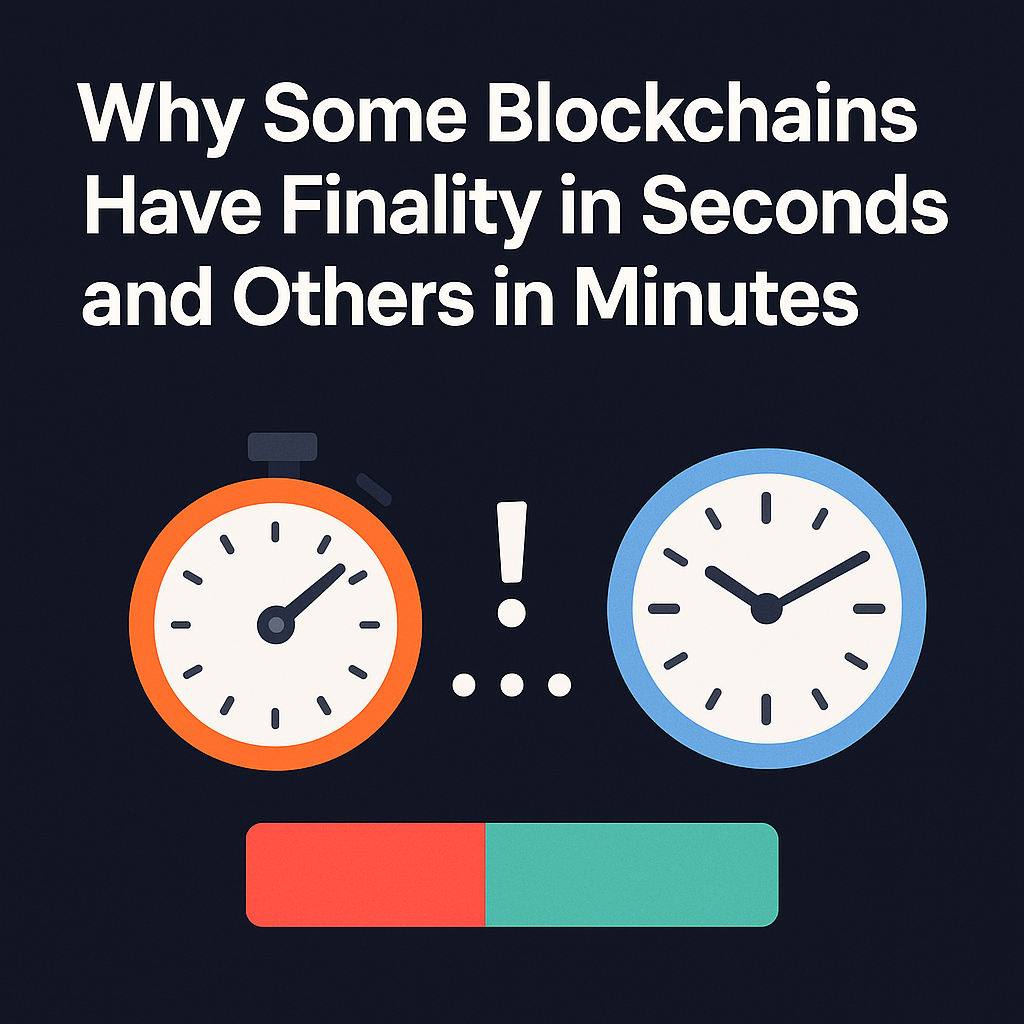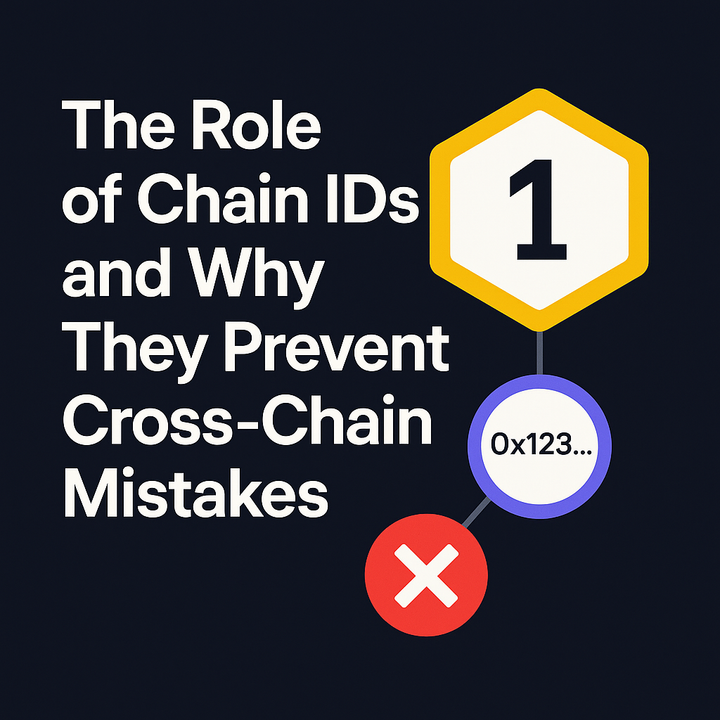Why Some Blockchains Have Finality in Seconds and Others in Minutes

Finality means the point at which a blockchain transaction is locked in forever — no more reversals, no rollbacks, no “oops.”
Some blockchains achieve finality in a few seconds. Others need minutes or even hours.
The difference comes down to probabilistic finality vs. instant finality.
Probabilistic Finality
This is used by Proof-of-Work blockchains (like Bitcoin).
- When a block is mined, your transaction probably won’t be reversed.
- But if another miner produces a competing block, the network must decide which chain is “longest.”
- That means there’s always a small chance of a “reorg” (a rollback).
Example: Bitcoin
- Each block takes ~10 minutes.
- Exchanges usually wait for 6 confirmations → about an hour.
- Why? Because the more blocks added after yours, the lower the probability of reversal.
This is why it’s called probabilistic — the certainty grows over time.
Instant Finality
This is used by many modern Proof-of-Stake blockchains.
- Validators agree on a block before it’s confirmed.
- Once finalized, it cannot be reversed without breaking the entire system.
- No need to wait for extra confirmations.
Example:
- Solana → ~2–5 seconds
- Near → ~2 seconds
- Avalanche → sub-second finality
- Cosmos Tendermint chains → ~6 seconds
Here, transactions are final almost as soon as they’re included.
Real-World Analogy
- Probabilistic Finality = Writing with a pencil. The more you go over it (more confirmations), the harder it is to erase.
- Instant Finality = Writing with a pen. Once it’s written, it’s permanent right away.
Tradeoffs
- Probabilistic Finality (Bitcoin/Ethereum PoW)
– Strong security, battle-tested, but slow. - Instant Finality (PoS chains)
– Fast and user-friendly, but requires strong validator coordination and fault tolerance.
Conclusion
The reason some blockchains finalize in seconds while others take minutes is simple:
- Older PoW chains use probabilistic finality → safe but slow.
- Modern PoS chains use instant finality → fast and final.
Both approaches balance speed vs. security — and together, they show the tradeoffs of blockchain design.
For More Info related to Mitosis please follow official links below
Mitosis Website : https://mitosis.org/
Mitosis Expedition : https://expedition.mitosis.org/
Mitosis Docs : https://docs.mitosis.org



Comments ()